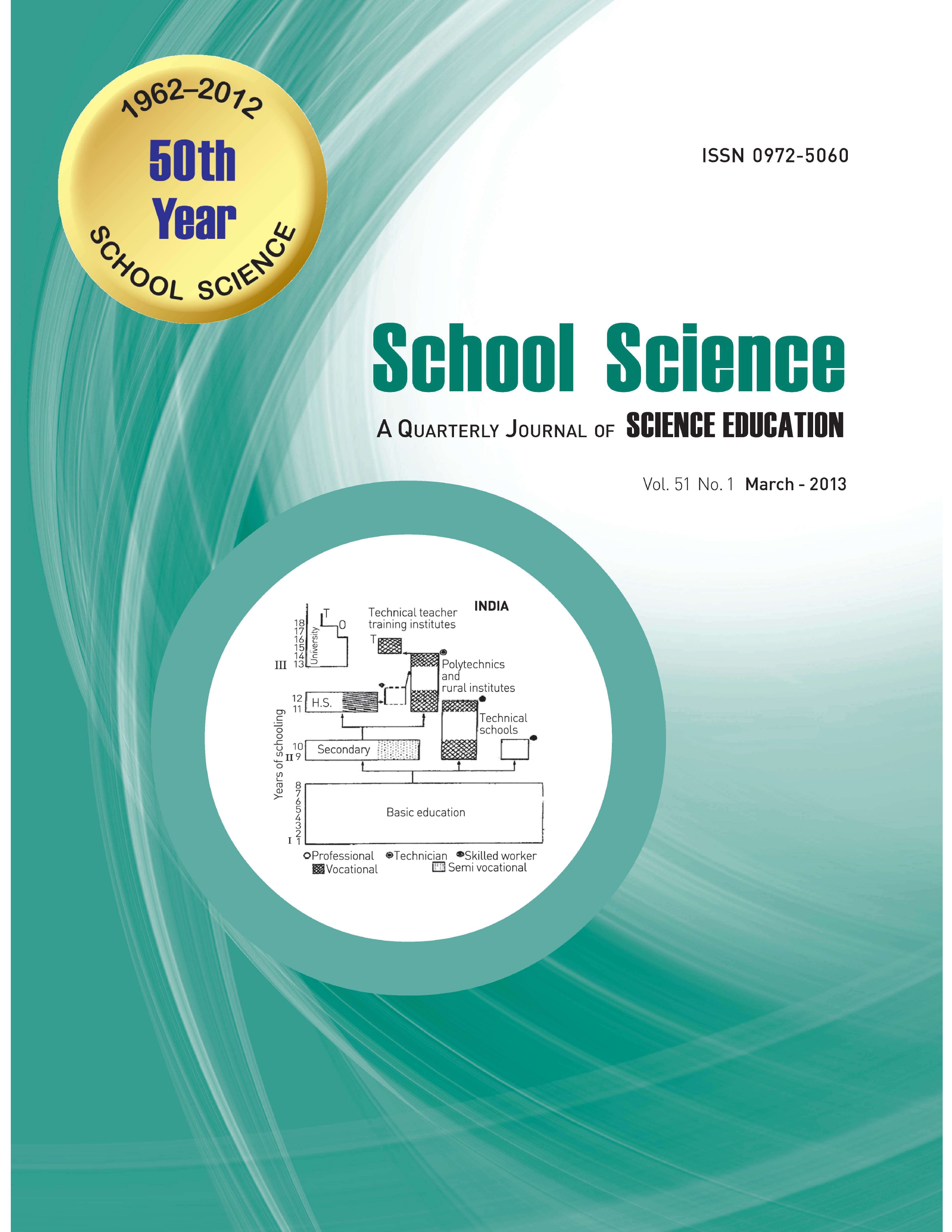
Published 2013-03-31
Keywords
- Science Project Work,
- scrap-books,
- science and technology
How to Cite
Abstract
It is matter of great concern that in this age of science and technology, aspects of science teaching are not getting the proper attention in our country. The emphasis is still on rote learning of science. On the other hand, in many advanced countries the cognitive development practices have become an important area of linking of science instruction with students’ cognitive development. Goods (1980) observes the following: Where ‘thinking’ is a desired outcome, the teacher must have an understanding of the general cognitive characteristics and range of abilities of the children. Many textbooks and materials that have been developed for science instruction assume a level of thinking that is not available to many or, in some cases, to all children in the classroom. Thus, the blame for science curricula not catering for the cognitive development lies squarely on the outdated textbooks and classroom instructional techniques, like lecture and discussion methods. These practices do not provide opportunities for scientific investigation and experimentation. Therefore, it becomes imperative to switch over from the lecture method to the problem-solving and project methods of instruction. Some people and investigatory experiments can be easily set for students to collect observations and interpret those on their own. For this purpose a deliberate attempt should be made to familiarise students with the variables and controls in the experimental situations.
